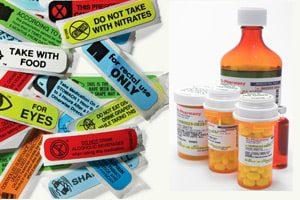
The current practice of giving a drug two names—a brand name and a generic name – can confuse practitioners and increase the chance of medication errors. Almost all medications have a brand name that remains under patent protection for 20 years, during which the patent holder is the sole manufacturer and distributor. When the patent […]
 The current practice of giving a drug two names—a brand name and a generic name – can confuse practitioners and increase the chance of medication errors.
The current practice of giving a drug two names—a brand name and a generic name – can confuse practitioners and increase the chance of medication errors.
Almost all medications have a brand name that remains under patent protection for 20 years, during which the patent holder is the sole manufacturer and distributor. When the patent expires and the drug goes generic, drug makers can manufacture the drug under the generic name, but the generic name is often very different from the brand name that the public has come to know, according to The New York Times’ Well blog. The price of the generic tends to be less and for this reason insurance plans favor generics. The original manufacturer retains the brand name and tries to keep that name in use because drug makers know people tend to trust brand name drugs more.
But for doctors and nurses, the dual naming system opens the door to medication errors as they seek to navigate a vast drug inventory and complex dispensing rules. A prescriber needs to identify medications under both the brand name and the generic name. In certain drug classes there are many similar drugs and a number of painkillers have a combination of active ingredients.
Theresa Brown, the Well blog writer, suggests simplifying the naming system. Each drug would have one name, either the brand or generic name. New drugs would continue to be patent-protected for 20 years, as they are now. After the patent expires, any company producing the drug would add a -G symbol to the name, indicating a generic formulation. So, for example, the brand-name blood thinner Plavix would be sold as Plavix-G in its generic form.


